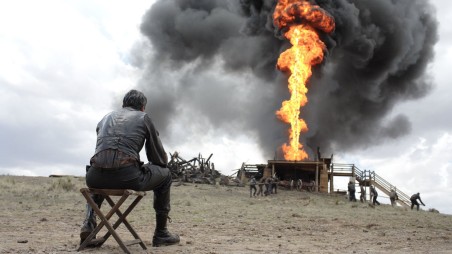Paul Thomas Anderson has had an interesting career in film. Many mark his true beginning as being the short film “Cigarettes and Coffee,” a 20-minute crime story which would become his first feature-length film “Hard Eight.” This was a wonderful start, but PTA truly set himself apart with his next film “Boogie Nights,” an ambitious period piece about the pornography industry of the 70’s and 80’s.
What made “Boogie Nights” so special was PTA’s attention to detail. He meticulously changed clothing styles, music, and the attitudes of characters as the film moves from one decade to another. He builds a complex network of characters who are all struggling to find their identity and stay relevant in a culture that is rapidly changing.

After “Boogie Nights,” PTA kept experimenting, bringing us “Magnolia” and “Punch Drunk Love,” but I consider his best work to be what followed: “There Will Be Blood.” PTA presents a bleak, visceral look at the turn of the century oil industry in this 2-and-a-half-hour epic following fictional oil tycoon Daniel Plainview, played by the masterful Daniel Day-Lewis. Through Plainview’s story, we witness the birth of American corporate greed from a sociopathic, and sometimes psychopathic point of view. It is a vividly uncomfortable film, as it should be, and it captured the oil boom era in a way that forces the audience to think about the cost of industrial ambition, all the way down to the personal level.

After “There Will Be Blood” came another intriguing period piece, this time with PTA’s vision of the US in the 50’s from the point of view of Freddie Quell, a returning soldier weighed down with PTSD and erratic behavior. The role is probably the best piece of acting I have ever seen from Joaquin Phoenix, or anyone else for that matter. Quell, who has grown accustomed to military culture, being told what to do and when to shoot at a moment’s notice, is hopelessly lost when he returns to the States. He drinks heavily and either fights or has sex with anybody who will drink with him. He finds a Master in Lancaster Dodd, a charismatic cult leader played by Philip Seymour Hoffman. Dodd is the head of a movement loosely based on Scientology, a movement that only adds more questions to Quell’s directionless life. The film is a disturbing look at what returning soldiers in the 50’s had to deal with when they had no home to go to.

PTA’s “Inherent Vice,” which will hit theaters on December 12th, marks the director’s first return to the 70’s era, as well as his first adaptation of a novel. The novel, written by Thomas Pynchon, is a detective story about a weed-smoking private investigator named Doc Sportello (who will be played by Joaquin Phoenix), a hazy character who gets involved in a kidnapping plot in 1970 Los Angeles. The trial of the Manson family is used as a touchstone for the novel, a way to orient the events in time and ground the characters in the world. The film will hopefully achieve the comedic view of the 70’s depicted by the novel. Needless to say, the adaptation is in good hands. PTA himself expressed excitement for the adaptation, hoping to accomplish a Cheech and Chong vibe with his depiction of the era.

I know I will be heading to the theater on day one to see how PTA manages the adaptation.
You can view the official trailer here, as well as the shorter promotional trailer (cut by PTA himself) here.